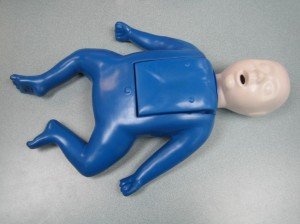A febrile seizure is described as a convulsion triggered by erratic electrical activity in the nerve cells of the brain brought on by fever. Babies and children often have conditions that are accompanied by fever.
The exact cause of a febrile seizure is unknown. They might occur once the temperature of a child increases or falls rapidly. In most circumstances, a febrile seizure could not be predicted or prevented. Additionally, the seizures have a genetic predisposition in some families.
How to prevent a fever
- You can provide the child with fever-reducing medications prescribed by the doctor.
- Do not overwrap or overdress the child. Always remember that the body loses heat via the skin. If the child is bundled up, the excess heat could not escape.
- Sponge the child using lukewarm water or place inside a shallow bathtub that contains 2-3 inches of water and slowly drizzle it over the body. Avoid using cold water or alcohol to reduce the fever of the child.
- If the child starts to shiver or shake while in the bathtub or basin, stop sponging and remove him/her from the water.
- During the course of the fever, provide the child with plenty of fluids to drink to prevent dehydration.
Indications of a febrile seizure
Depending on the case, not all the symptoms can occur.

- Fever that is high or there is a rapid increase in the body temperature
- Generalized muscle contraction and stiffness that typically lasts for 15-20 seconds
- Loss of consciousness or fainting that last for 30 seconds to 5 minutes
- Biting of the tongue or cheek
- Violent rhythmic muscular contractions and relaxation that usually lasts for 1-2 minutes
- Clenching of the teeth or jaw
- Rolling of the eyes back into the head
- Loss of control over bowel movement or urine
- Absence of breathing or there is difficulty in breathing during a seizure episode and bluish skin color.
First aid for febrile seizures
- When a child is experiencing a seizure, you have to stay calm and protect the child from injury.
- Do not attempt to hold or restrain the child down during the episode.
- Position the child onto his/her side in case vomiting occurs.
- Do not place anything in the mouth of the child.
- The clothing should be loosened and support the head using a soft object or pillow if available.
- Take note how long the episode lasts, type of movements present and parts of the body affected.
- Once the seizure subsides, the child is still disoriented for a few minutes while the brain rests and recharges.
When to call for emergency assistance
- The child experiences a febrile seizure for the first time or the episode is a new type.
- Child has difficulty breathing or the skin appears bluish in appearance.
- Repeated episodes occur
- Seizure lasts longer than 5 minutes.
